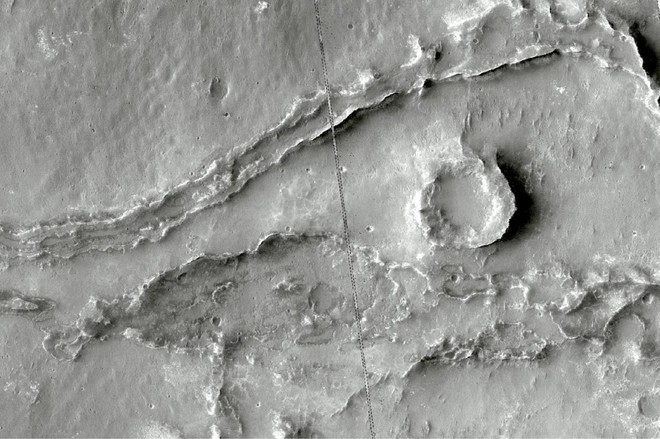A new study led by Dr Adam Losekoot of the Open University (UK) and funded by the UK Space Agency has revealed a vast ancient river network in the Noachis Terra plateau in the southern hemisphere of Mars. Using data from NASA spacecraft, the team discovered “sinuous river ridges” (FSRs) – landforms thought to have been formed by buried rivers, which were later exposed as the surrounding sediments eroded over time.

This image of the surface of Noachis Terra shows that Mars once had a vast river system in this area. Photo: NASA
The results revealed that the region once hosted a river system that spanned 15,000 km2, a strong indication of the long-term presence of surface water in the past. The finding is particularly significant because Noachis Terra has been overlooked due to its lack of branching valleys, which are often used to infer ancient flows. However, by focusing on the FSR, the scientists have uncovered new evidence that rainfall may have played a major role in shaping the landscape.
This, Dr Losekoot said, supports the hypothesis that during the Noachian-Hesperian transition period – some 3.7 billion years ago – Mars was a more active and stable planet than it is today. The existence of the river network not only expands our understanding of Mars’ climate history but also raises the possibility that conditions were once suitable for life.
This discovery is also expected to guide future exploration missions, helping to identify potential locations to search for traces of past life on the red planet.
Source: https://khoahocdoisong.vn/giat-minh-bang-chung-moi-ve-su-ton-tai-cua-nuoc-tren-sao-hoa-post1554908.html


































































































Comment (0)